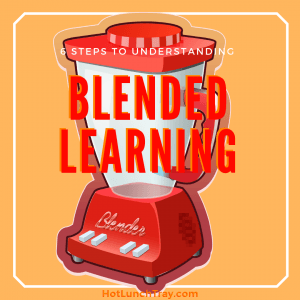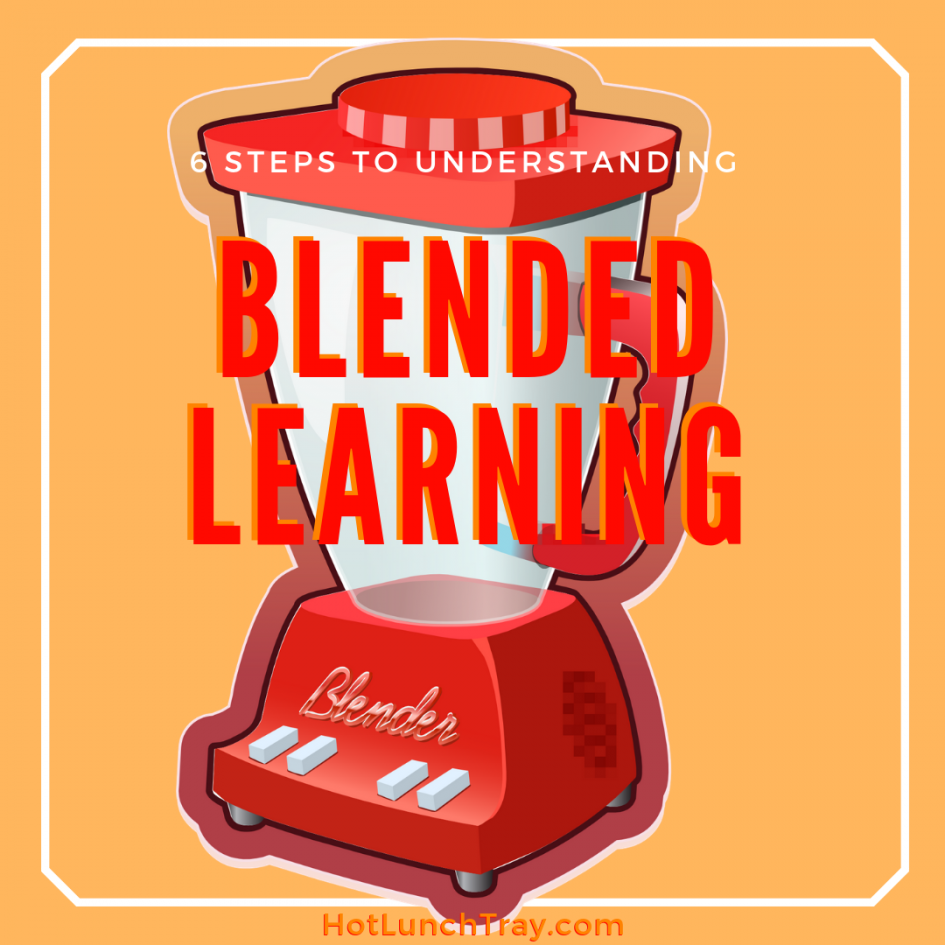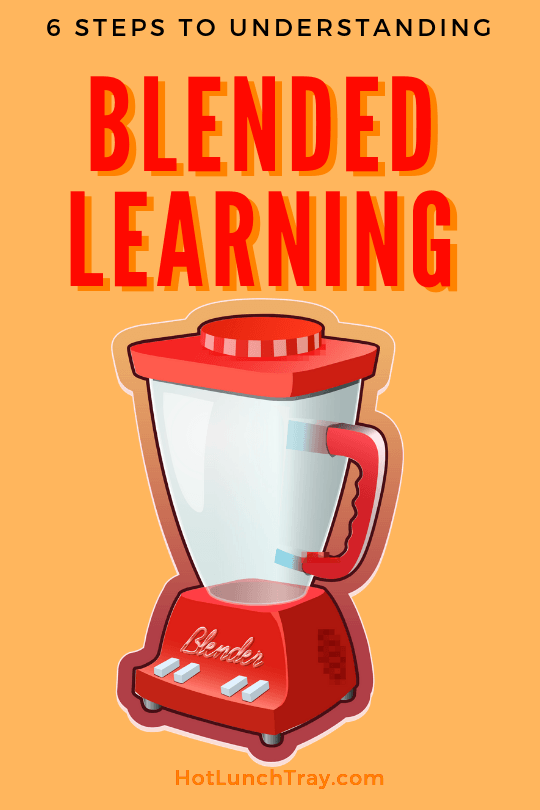Blended Learning is a term whose high usage threatens to obscure its meaning. Unless you understand Blended Learning for yourself.
Let’s break it down to 6 steps.
Educators often have to see such big educational ideas broken down in front of them, “with my kids, at my school.”
Here are six step s to accomplish that:
Norm What, Who, & Where
Define
The first step to understanding Blended Learning is to agree on the definition of Blended Learning. While it is not glamorous, it is needed to make sure we are all talking about the same thing.
Take where you want to be eventually and think about how many iterations (often that means years) before you expect to get there. How many baby steps are you willing to allow any teacher to ramp up their classroom to a Blended Learning environment.
1. Consider the definition of The Christensen Institute, as most K12 organizations work from this definition:
The definition of blended learning is a formal education program in which a student learns:
at least in part through online learning, with some element of student control over time, place, path, and/or pace;
at least in part in a supervised brick-and-mortar location away from home;
and the modalities along each student’s learning path within a course or subject are connected to provide an integrated learning experience.
2. Identify Where you are & set Goals!
Start
It is difficult to honestly evaluate where you as an educator, let alone where you as a school/district are with this definition. Often it is because you are impermanent with your application of Blended Learning early on. Call out the elements which meet the agreed upon definition and explicitly explain how you expect to see these in classrooms/schools.
Try to separate out technology integration {Read: Tech Integration vs. Blended Learning} from the extending and personalizing of a student’s learning.
Once you are comfortable with the evaluation of your current level of Blended Learning in your environment, stretch your future achievement. Consider calling out one element – time, place, path, pace – for further development.
Consider increasing the amount of your classroom content available online. In 2007 The Sloan Consortium ( presently the Online Learning Consortium) asserts that when 30-79% of class content is available online that is a blended learning class. Could you take one facet of your face-to-face instruction and convert it to online content?
You may try another format of Blended Learning, partner with a fellow educator to find other ways to blend your student’s learning. Path and Pace are more complex to orchestrate in an online platform. Consider looking to supplement your online content with programs/content pre-created by publishers/vendors. Or crowdsource the creation of content between several educators of similar teaching philosophies.
Put a time limit on your goals so you can check in on progress with all stakeholders.
Observe Desired Elements

When we have agreed upon what we expect to see as evidence of Blended Learning we are ready to observe each other. In order to do so, we need to agree upon the definition and what that definition looks like in our classrooms/schools.
3. Observation Tool
Find or create a tool which either gives descriptions of the type of things you hope to see representing Blended Learning or create checklists of practices, strategies, techniques to see and check off.
4. Observation Structure
Consider a lower stakes observation events with a small group at first. Consider using just the committee studying Blended Learning as a starting group and only observe each other. This can hone the observation instrument and build trust while cementing the definition within the small group.
The low stakes environment can then be expanded. Consider any/all of the following ways to expand:
- bring observers with already seasoned “raters” to observe what is being noted on the observation tool
- allow others to come in and observe with the observation tool
- distribute the observation tool and invite others to rate classrooms on their own
If the later is your next step consider the extensive documentation of the pineapple chart structure. It allows the classroom teacher to retain some control over when people are invited into her/his room, see the expected structures.
Reflect
For teachers to make any change quicker they need to discuss it with themselves and each other. One of those is easier than others in the K12 educational realm – and usually happens over a copy machine or lunch. In order to make the change take hold faster, in a deeper way self-reflection has to be built into the experience. If the reflection is built in, maybe it could also be distributed throughout the process?
Reflection on 1 & 2 is the deepest and longest discussions likely. Those two steps build the “Why” in your group and may be as philosophical as any other teacher-led school movement.
Reflection on 3 & 4 is less likely to be philosophical and more practical, the “How” will fit into the teacher wheelhouse of getting the job done.
5. Make the Time
It isn’t that teachers do not want to talk through this change in teaching and learning; it is more likely that no one has carved out and protected the time for them to do so. Consider showing the importance of the reflection process by dedicating real time to this – sub coverage or days away from school. Signaling the importance of this goes a long way to making it a thoughtful movement in any classroom/school/district.
6. Debrief
Official debriefs in the form of reflection is important, but likely there will be informal periods of reflection too. Many educators in the midst of change need informal and more personal opportunities to debrief with colleagues. Look for and honor those with time.
With these 6 steps you are well on your way to understand Blended Learning for yourself.
Here is what I am currently reading to further develop my understanding of Blended Learning:
 |
 |
And, here is what is up next for me to read:
 |







2018-12-16 at 6:58 am
The Flipped Classroom model (or blended learning model, if that is your cup of tea) is based on very simple, logical principles. Students in this age of supersaturation of technology are good at decoding information via media. Videos and pictures are to them what textbooks were to us. In the Flipped Classroom model, short instructive videos are watched at home in lieu of lecture in the classroom. This allows for much more time in the classroom for remediation and differentiation. Essentially, what would normally be labeled as ‘homework’ is now done in class under the careful eye of the teacher (who can truly be of service, as opposed to being useless to the student struggling with the same assignment at home). Lecture is shifted to homework time, eliminating classroom distractions and the need to tell Johnny a dozen times to sit down and get a pencil out (he doesn’t have one).
And Happy New Year!